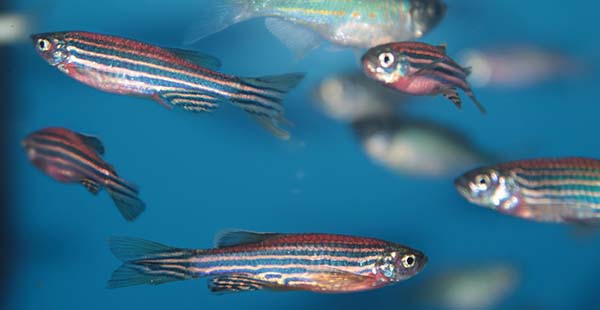Abstract
This EDIS publication is the second in cellular agriculture series in which we provided information on why some fish species are better candidates for cell-based seafood production. In addition, we discussed why zebrafish could be a suitable animal model for the research and development of cell-based seafood.
References
Alam, A. N. 2007. Structure of Fish Muscles and Composition of Fish.
Arunachalam, M., M. Raja, C. Vijayakumar, P. Malaiammal, and R. L. Mayden. 2013. “Natural History of Zebrafish (Danio rerio) in India.” Zebrafish 10 (1): 1–14. https://doi.org/10.1089/zeb.2012.0803
Berger, J., and P. D. Currie. 2012. “Zebrafish models flex their muscles to shed light on muscular dystrophies.” Disease Models & Mechanisms 5 (6): 726–732. https://doi.org/10.1242/dmm.010082
Caballero, B., L.C. Trugo, and P.M. Finglas. 2003. Encyclopedia of Food Sciences and Nutrition. Academic.
Cook, Z. T., N. L. Brockway, Z. J. Tobias, J. Pajarla, I. S. Boardman, H. Ippolito, S. Nkombo Nkoula, and T. A. Weissman. 2019. “Combining Near-Infrared Fluorescence with Brainbow to Visualize Expression of Specific Genes within a Multicolor Context.” Molecular Biology of the Cell 30 (4): 427–524. https://doi.org/10.1091/mbc.E18-06-0340
Goswami, M., Y. Belathur Shambhugowda, A. Sathiyanarayanan, N. Pinto, A. Duscher, R. Ovissipour, W. Singh Lakra, and R. Chandragiri Nagarajarao. 2022. “Cellular Aquaculture: Prospects and Challenges.” Micromachines 13 (6): 828. https://doi.org/10.3390/mi13060828
Erkkilä, A., V. D. de Mello, U. Risérus, and D. E. Laaksonen. 2008. “Dietary Fatty Acids and Cardiovascular Disease: An Epidemiological Approach.” Progress in Lipid Research 47 (3): 172–187. https://doi.org/10.1016/j.plipres.2008.01.004
Kent, M. L., C. Buchner, V. G. Watral, J. L. Sanders, J. LaDu, T. S. Peterson, and R. L. Tanguay. 2011. “Development and Maintenance of a Specific Pathogen-free (SPF) Zebrafish Research Facility for Pseudoloma neurophilia.” Diseases of Aquatic Organisms 95 (1): 73–79. https://doi.org/10.3354/dao02333
Khan, K. M., A. D. Collier, D. A. Meshalkina, E. V. Kysil, S. L. Khatsko, T. Kolesnikova, Y. Y. Morzherin, J. E. Warnick, A.V. Kalueff, and D. J. Echevarria. 2017. “Zebrafish Models in Neuropsychopharmacology and CNS Drug Discovery.” British Journal of Pharmacology 174 (13): 1925–1944. https://doi.org/10.1111/bph.13754
Kinth, P., G. Mahesh, and Y. Panwar. 2013. “Mapping of Zebrafish Research: A Global Outlook.” Zebrafish 10 (4): 510–517. https://doi.org/10.1089/zeb.2012.0854
Kling, P., E. Jönsson, T. O. Nilsen, I. E. Einarsdottir, I. Rønnestad, S. O. Stefansson, and B. T. Björnsson. 2012. “The Role of Growth Hormone in Growth, Lipid Homeostasis, Energy Utilization, and Partitioning in Rainbox Trout: Interactions with Leptin, Ghrelin and Insulin-like Growth Factor I.” General and Comparative Endocrinology 175 (1): 153–162. https://doi.org/10.1016/j.ygcen.2011.10.014
Kunyaboon, S., K. Thumanu, J. W. Park, C. Khongla, and J. Yongsawatdigul. 2021. “Evaluation of Lipid Oxidation, Volatile Compounds and Vibrational Spectroscopy of Silver Carp (Hypophthalmichthys molitrix) during Ice Storage as Related to the Quality of Its Washed Mince.” Foods 10 (3): 495. https://doi.org/10.3390/foods10030495
Ouellet, V., J. Marois, S. J. Weisnagel, and H. Jacques. 2007. “Dietary cod protein improves insulin sensitivity in insulin-resistant men and women: A randomized controlled trial.” Diabetes Care 30 (11): 2816–2821. https://doi.org/10.2337/dc07-0273
Potter, G., A. S. T. Smith, N. T. K. Vo, J. Muster, W. Weston, A. Bertero, L. Maves, D. L. Mack, and A. Rostain. 2020. “A more open approach is needed to develop cell-based fish technology: It starts with Zebrafish.” One Earth 3 (1): 54–64. https://doi.org/10.1016/j.oneear.2020.06.005
Prell, P. A., and F. M. Sawyer. 1988. “Flavor Profiles of 17 Species of North Atlantic Fish.” Journal of Food Science 53 (4): 1036–1042. https://doi.org/10.1111/j.1365-2621.1988.tb13524.x
Tavares, B., and S. S. Lopes. 2013. “The Importance of Zebrafish in Biomedical Research.” Acta Médica Portuguesa 26 (5): 583–592. https://doi.org/10.20344/amp.4628
Rubio, N., I. Datar, D. Stachura, D. Kaplan, and K. Krueger. 2019. “Cell-Based Fish: A Novel Approach to Seafood Production and an Opportunity for Cellular Agriculture.” Frontiers in Sustainable Food Systems 3: 43. https://doi.org/10.3389/fsufs.2019.00043
Sun, W., T. He, C. Qin, K. Qiu, X. Zhang, Y. Luo, D. Li., and J. Yin. 2017. “A Potential Regulatory Network Underlying Distinct Fate Commitment of Myogenic and Adipogenic Cells in Skeletal Muscle.” Science Reports 7: 44133. https://doi.org/10.1038/srep44133
Xiao, Y., M. Gao, L. Gao, Y. Zhao, Q. Hong, Z. Li, J. Yao, H. Cheng, and R. Zhou. 2016. “Directed Differentiations of Zebrafish Pluripotent Embryonic Cells to Functional Cardiomyocytes.” Stem Cell Reports 7 (3): 370–382. https://doi.org/10.1016/j.stemcr.2016.07.020
Zebrafish Information Network (ZFIN). n.d. Search page. Retrieved on September 5, 2022. https://zfin.org/.
Zhang, G., X. Zhao, X. Li, G. Du, J. Zhou, and J. Chen. 2020. “Challenges and Possibilities for Bio-manufacturing Cultured Meat.” Trends in Food Science & Technology 97: 443–450. https://doi.org/10.1016/j.tifs.2020.01.026

